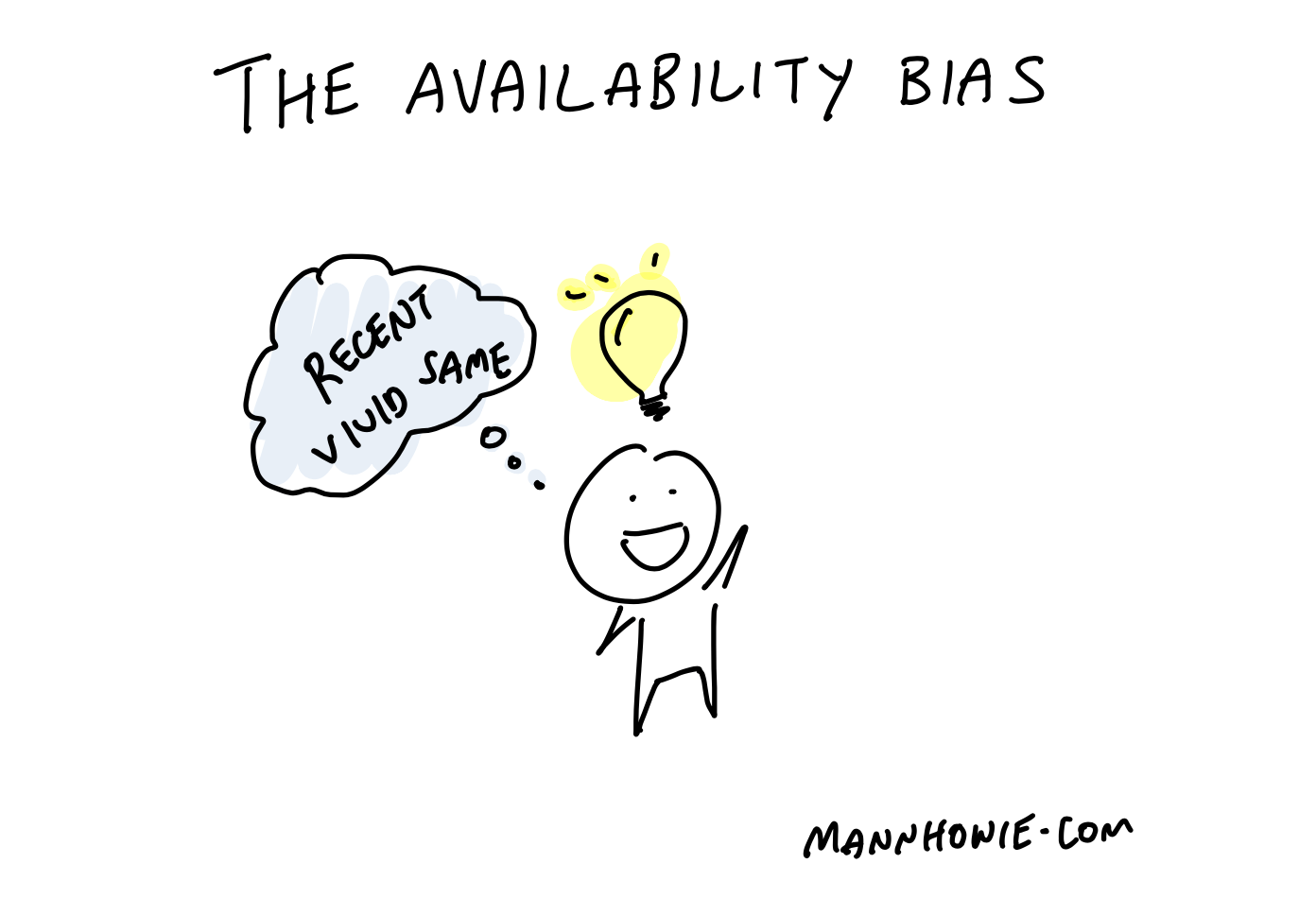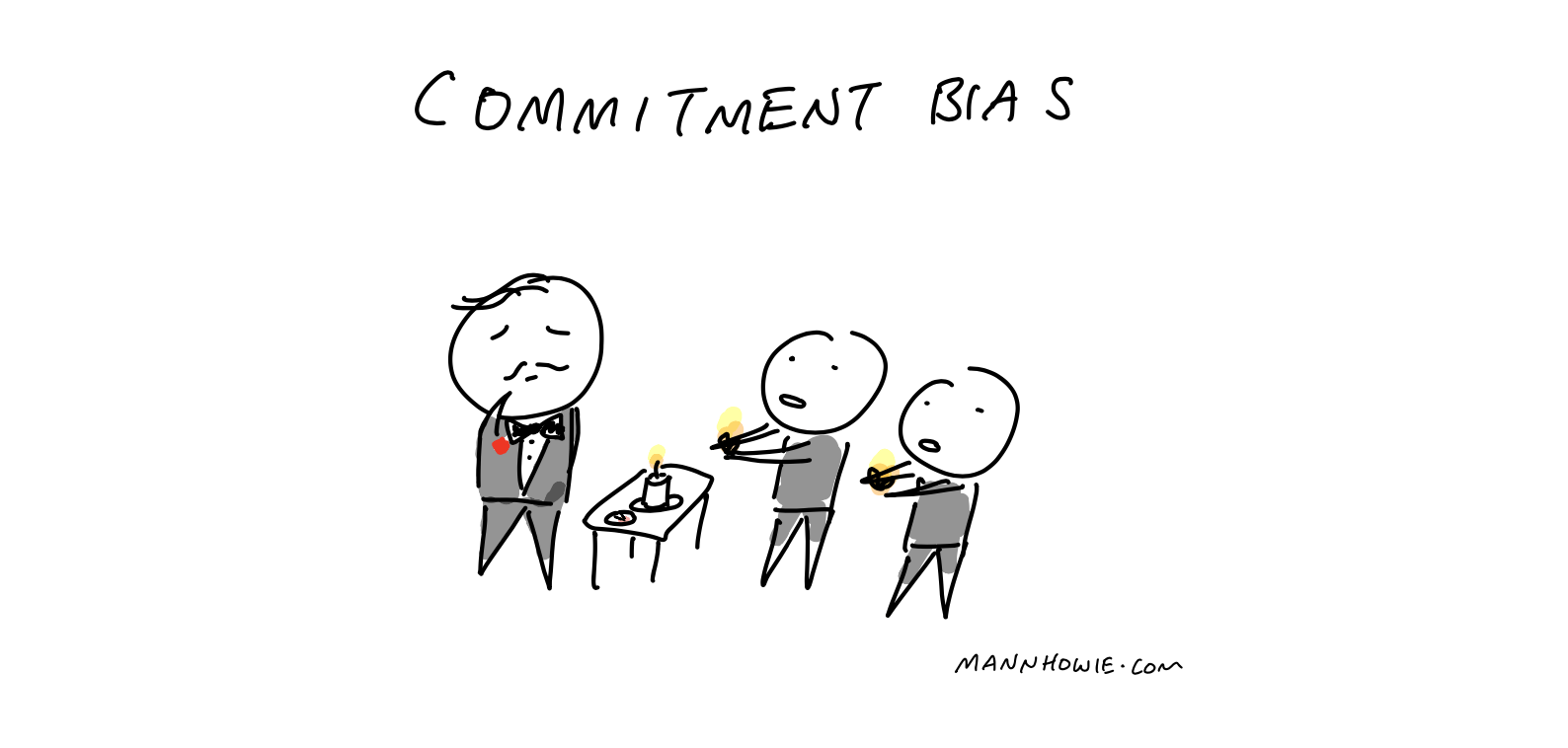7 Types of Bias - Survivorship, Confirmation, Framing and More Examples
7 minute read | Jan 30, 2023
management
Cognitive biases can negatively impact your ability to think critically and make informed decisions. Once you are aware of them, it will help you identify and navigate them.
Here is an explanation of the 7 main types of cognitive bias, some examples and how you can navigate them:
- Survivorship Bias
- Confirmation Bias
- Framing Bias
- Groupthink
- IKEA Effect
- Availability Bias
- Commitment Bias
1. Survivorship Bias
Focus on the traits of the successful whilst ignoring the failures.
This involves limiting our analysis to instances that have passed a success hurdle and not analysing those that didn’t pass the hurdle. This commonly occurs when we adopt key learnings from successful case studies yet remain blind to the unsuccessful instances who may have also followed the same learnings.
Examples
The famous WWII case study involves mathematician Abraham Wald who was tasked with identifying where to place more armour on fighter planes. The officers data of bullet holes in returning planes supported placing more amour on the fuselage vs the engine. However, Wald’s insight was to ask where the bullet holes weren’t - i.e. the engine. The surviving planes had fewer hits to the engine because those that were hit didn’t return.
A modern example would be to look at a customer acquisition funnel with a 10% activation rate. Common analysis would be to take key learnings from the behaviour and personas of this group to further lift activation. However, the greater insight would be to analyse the other 90% and ask why aren’t they activating? The latter is more challenging and often involves less access to data, but the payoff is greater.
How to Navigate?
Ask questions about what other data and groups are missing. Identify the success hurdle and ask why others have not passed it.
2. Confirmation Bias
Focus on data to promote our existing beliefs.
This involves seeking out information that validates our existing views and prior commitments. We also discount other information that may invalidate our views. Confirming evidence makes us feel good and people do what makes them feel good. The counter approach is the scientific method, which attempts to ask questions first before gathering evidence to either support or reject a hypothesis. The former is easier and faster, the latter is harder and time consuming.
Examples
The CEO has a new idea to launch a new product and instructs a team to conduct market research and competitor analysis on the feasibility of this product. The market research team is limited in scope and risks being urged to validate the success of the CEO’s new product idea. A better task for the team would be to investigate what the best product would be to solve a particular problem.
How to Navigate?
Try and identify if there is a pre-existing belief (yours or otherwise). Reflect on information you have rejected. Ask others with a different viewpoint.
3. Framing Bias
Solving a problem based on the context it is presented.
The specific context a problem is framed/ presented can influence the options and choices available.
Examples
The problem of low company profitability can be either framed as a need to cut costs or to increase revenue. The way the problem is framed will influence the options available (i.e. fire and restructure or enter new markets).
How to Navigate?
Ask what is the ultimate problem we are trying to solve. For example, ask what the outcome would be if we solved this problem. See if there are other solutions to achieving the same outcome.
4. Groupthink
The desire for group harmony leads to poor decision making.
People tend to avoid conflict, particularly in the presence of a majority and people of authority. People assume others have made informed decisions and fear the risk of looking un-knowledgable in front of others.
Examples
The term groupthink arose from the case study of the failed US Cuba Bay of Pigs invasion. In 1961, the CIA presented to President Kennedy a Cuba invasion plan formulated under the previous administration. Kennedy accepted it and early objections were dismissed and eventually no objections or alternatives arose. Kennedy learnt from this and a year later during the Cuban Missile Crisis intentionally absented himself from initial meetings to encourage free discussion. Two teams were created to evaluate the options before presenting to Kennedy.
How to navigate?
Be clear on the objective and values. Encourage other views to solve the objective.
5. IKEA Effect
Overvaluing things we place successful effort into
 The IKEA effect is a finding that people tend to ascribe a higher valuation towards self-assembled products compared to objectively similar products which they did not assemble (see article for study).
The IKEA effect is a finding that people tend to ascribe a higher valuation towards self-assembled products compared to objectively similar products which they did not assemble (see article for study).
Examples
A product team has spent significant time developing a high fidelity prototype based on the sales team's feedback. It has the latest best practice design patterns. They have not shipped an early version yet. The IKEA Effect makes the team less likely to cull or dramatically change the product in response to real world usage. They are at risk of devoting resources to failing projects.
How to navigate?
Treat your ideas like cattle, not like pets. Spike rough prototypes, talk to customers and run growth experiments.
6. Availability Bias
Overestimate the likelihood or frequency of an event when it is easier to recall
 People tend to assess the relative importance of issues by the ease of which they are retrieved from memory. Factors that influence memory include: recency, vivid emotion, and imagery.
People tend to assess the relative importance of issues by the ease of which they are retrieved from memory. Factors that influence memory include: recency, vivid emotion, and imagery.
Examples
Tversky and Kahneman's famous 1973 study had participants listen to a list of 39 names being read and were then asked to recall whether the list contained more men or women. The list either had fewer names of famous women and more names of less famous men (e.g. Elizabeth Taylor vs William Fulbright) or a list with fewer names of famous men and a list with more names of less famous women (e.g. Richard Nixon vs Lana Turner).
Over 80% of the participants incorrectly judged the list with famous names to be more frequent in terms of gender.
How to navigate?
Look for different examples: seek out and compare counter examples of what is easier to remember. For example older vs recent instances, positive vs negative experiences, multiple instances of any memorable imagery.
7. Commitment Bias
Following actions consistent with prior beliefs, words and actions
 Following through with commitments help confirm self-image and avoid cognitive dissonance. They are most effective when they are active, public, effortful and viewed as internally motivated.
Following through with commitments help confirm self-image and avoid cognitive dissonance. They are most effective when they are active, public, effortful and viewed as internally motivated.
Examples
At the height of the Cabbage Patch Kids craze in the 1980s the company was forced to halt its pre-christmas advertising after it was accused of over advertising and under-supplying toys. The strategy aimed to get parents to commit to their children of buying the toy in the lead up to Christmas. Then hoping parents would go to the store but left purchasing a different toy and then returning post Christmas to honour the original purchase commitment.
How to navigate?
Remind yourself it is ok to change your mind. Beware sales tactics that employ commitment bias to make prospects agree to a little purchase before a big purchase.
Want more tips?
Get future posts with actionable tips in under 5 minutes and a bonus cheat sheet on '10 Biases Everyone Should Know'.
Your email stays private. No ads ever. Unsubscribe anytime.